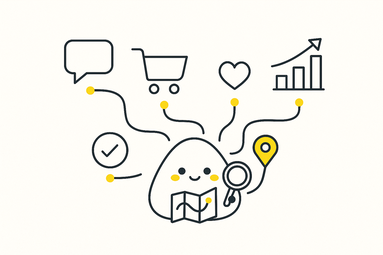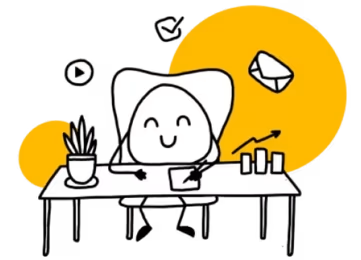.png)
Customer Journey Mapping: Steps, Tools & Impact
Learn customer journey mapping: what it is, how to create a journey map, tools, and how to turn customer feedback into growth. Templates inside.

Customer Journey Mapping: How to Create Effective Maps That Drive Better Customer Experiences and Business Growth
Customer journey mapping turns scattered customer feedback into a clear narrative of what customers do, think, and feel across your product lifecycle. When teams pair user research and continuous discovery with a disciplined mapping process, they reveal high-leverage moments (activation, renewal, support) and align on fixes that actually move the needle. This guide explains what customer journey mapping is, how to create a customer journey map, lightweight tools for customer journey mapping, and how to connect your map to delivery so it doesn’t die as wall art.
What Is Customer Journey Mapping (and Why It Works)
At its core, a journey map is a visual storyline of a customer accomplishing a goal across channels and time—enriched with actions, thoughts, emotions, and measurable outcomes. Authoritative primers from NN/g define the method and outline the core components (timeline, stages, touchpoints, emotion curve, and opportunities), explaining why mapping the whole journey (not isolated touchpoints) exposes the biggest wins.
Journey mapping works because it:
- Forces a single, shared view across product, marketing, sales/CS, and ops
- Converts qualitative customer interviews into testable opportunities
- Prioritizes fixes based on impact to satisfaction, adoption, retention, and LTV
The Anatomy of an Effective Journey Map
Include these building blocks so your map is actionable—not decorative:
- Persona/segment & scenario: e.g., “New admin trials the product and upgrades within 14 days.”
- Stages: Awareness → Consideration → Onboarding → Use → Support → Renewal/Advocacy (adapt as needed).
- Touchpoints & channels: site/app, email, chat, docs, retail/partners.
- Customer actions & JTBD: what the user attempts in each stage.
- Emotion & quotes: the voice of the customer by stage.
- Pain points & opportunities: tied directly to metrics you plan to move.
- Owners & KPIs: DRIs, success metrics, guardrails (e.g., latency, complaint rate).
- Backstage view (optional): if services and ops drive front-stage quality, add a service blueprint layer showing systems and processes.
How to Create a Customer Journey Map (Step-by-Step)
1) Frame scope and success
Pick one high-value scenario and one segment (e.g., “trial → paid for mid-market teams”). Define success (primary metric + guardrails). Publish scope to prevent “map sprawl.”
2) Gather evidence: user research + analytics
Synthesize customer feedback from interviews, support tickets, reviews, and product usage. If you need a compact playbook to connect research to delivery, our Product Discovery Process is a great starting point.
3) Draft the current-state map
Lay out stages and touchpoints. Place user actions, thoughts, and emotions. Annotate friction points with evidence (e.g., “35% drop at ID-check on mobile”).
4) Validate with customer interviews
Run 5–8 quick interviews to pressure-test the sequence, emotions, and blockers. Capture verbatims that explain the “why” behind behavior. (Tip: anchor interviews to specific moments on the map, not general opinions.)
5) Identify opportunities & outcomes
Translate pain points into outcome-oriented opportunities (“reduce time-to-first-value,” “improve trust on pricing page”). Use an opportunity solutions tree (OST) to organize opportunities under a single desired outcome and keep teams aligned as discovery continues; Teresa Torres’s guide is the gold standard. Product Talk
6) Future-state map & bets
Sketch the ideal journey, then define 3–5 bets with explicit hypotheses, owners, and success metrics. Sequence improvements in thin slices: copy → UX micro-interaction → policy/process change → larger feature.
7) Create the operating cadence
- Weekly: “demo the delta” (show the smallest proof of improvement)
- Bi-weekly: update the OST and decision log
- Monthly: journey metrics review and next-bet selection
For a real-world example of continuous discovery and OSTs in practice, see how we strengthened discovery with Opportunity Solution Trees at Blinkist.
From Map to Momentum: Prioritize, Test, Ship
A map becomes valuable only when it changes what ships.
- Prioritize transparently
- Use ICE/RICE and expected impact on stage metrics (activation, task success, renewal). Publish the stack-rank with assumptions.
- Pre-register your hypothesis
- Example: “If we simplify mobile verification, task success rises from 62% → 80%, cutting drop-off by 30%.”
- Design the smallest meaningful test
- Start with low-effort interventions (copy, defaults, progress cues). Expand to design/system changes once the signal is strong.
- Install guardrails
- Protect health metrics (crash rate, latency, support complaints) while you optimize stage metrics.
- Tell the story with evidence
- Every shipped change references the journey stage, the OST opportunity, and the metric moved. This is how continuous discovery compounds.
Tools for Customer Journey Mapping
Choose tools that match scope, stakeholders, and how often you’ll iterate:
- Diagramming & facilitation: Miro, FigJam, Lucid — fast for workshops and cross-functional mapping
- Research ops: Dovetail, Aurelius — tag customer interviews, create theme clusters, and surface quotes
- Analytics: Amplitude, Mixpanel, GA4 — quantify drop-offs and time-to-value
- Ops glue: Notion/Confluence — one hub for the map, OST, decision log, and cadence
If your team is new to journey mapping, NN/g’s foundational resources (articles + videos) succinctly outline components and phased steps you can mirror in any tooling stack.
Conclusion
Practiced well, customer journey mapping is more than a visualization—it’s the operating system for customer-centric growth. By grounding maps in user research and customer interviews, organizing work with an opportunity solutions tree, and running a steady cadence of continuous discovery, you’ll turn empathy into execution: fewer misfires, faster time-to-value, and measurable lifts in satisfaction and retention. To go deeper, start with a discovery workflow you can reuse and study proven OST patterns from teams doing this at scale.
FAQ
Read More Posts
.png)
End Your Product Recruitment Pains (For Good)
.png)
Black Friday Lessons for PMs: Ship Fast, Stay Sane
.png)
Interim Product Manager: When Contract Beats Full-Time
.png)
Imposter Syndrome? The 3 Rules of Product Management Networking
.png)
The Secret 80% Rule of Product Management Strategy - Your Promotion!
.png)


